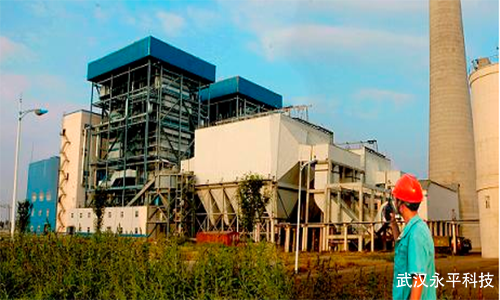The degree of wear of the heating surface of circulating fluidized bed (CFB) boiler is related to the furnace structure, heating surface arrangement, flue gas flow rate, coal type, particle size composition, number of separators, separation efficiency, operation mode (bed pressure, furnace temperature, air volume distribution), etc.

The usual amount of wear on the heated surface can be expressed by the following formula.
E = f1×f2×f3×Cash×Vgasn
Where: E - wear amount; f1 - ash characteristic coefficient;
f2 - scouring coefficient; f3 - anti-wear characteristic coefficient;
Cash - ash concentration; Vgas - flue gas velocity;
n - subsurface index, usually value: 3 to 4.
(1) Ash characteristics coefficient (f1)
Ash characteristics coefficient is mainly related to the coal quality (ash, grindability coefficient), particle size distribution, ash particle characteristics (melting point, hardness, composition, burstability, abrasiveness), limestone quality (composition, activity), particle size distribution, etc.
(2) Scouring coefficient (f2 )
Scouring coefficient is mainly related to furnace chamber type, structure size, heating surface structure, layout type, interface over section structure, air distribution type, etc.
(3) anti-friction coefficient (f3)
Anti-abrasion characteristic coefficient is mainly related to the heating surface pipe, anti-abrasion device (anti-abrasion cover tile, paint), casting material and installation quality (welding process, indicating the smoothness), etc.
(4) Ash concentration Cash
Ash concentration is mainly related to the coal quality (calorific value, ash, volatile content), particle size distribution, limestone quality (composition, activity), particle size distribution, separator type, separation efficiency, slag removal equipment and operation mode, boiler operation mode (excess air coefficient, a secondary air volume ratio, upper and lower secondary air configuration, bed height, furnace operating temperature), etc.
(5) Flue gas velocity Vgas
Flue gas velocity is mainly related to the size of the furnace chamber section, operating load, furnace flue gas temperature, excess air coefficient (total combustion air volume) and so on.
When the boiler structure (furnace structure, heating surface arrangement, flue gas scouring method, separator type) and the type of coal used for combustion, limestone (composition, particle composition, ash particle characteristics) to determine the amount of wear and tear of the boiler heating surface and fly ash concentration is proportional to the 3.5 times the flue gas velocity is proportional, so the concentration of fly ash, flue gas velocity is the main factor affecting the amount of wear and tear of the boiler heating surface, and flue gas velocity is particularly critical.
Please feel free to contact me!
Please contact us for more information+86-18062456085
